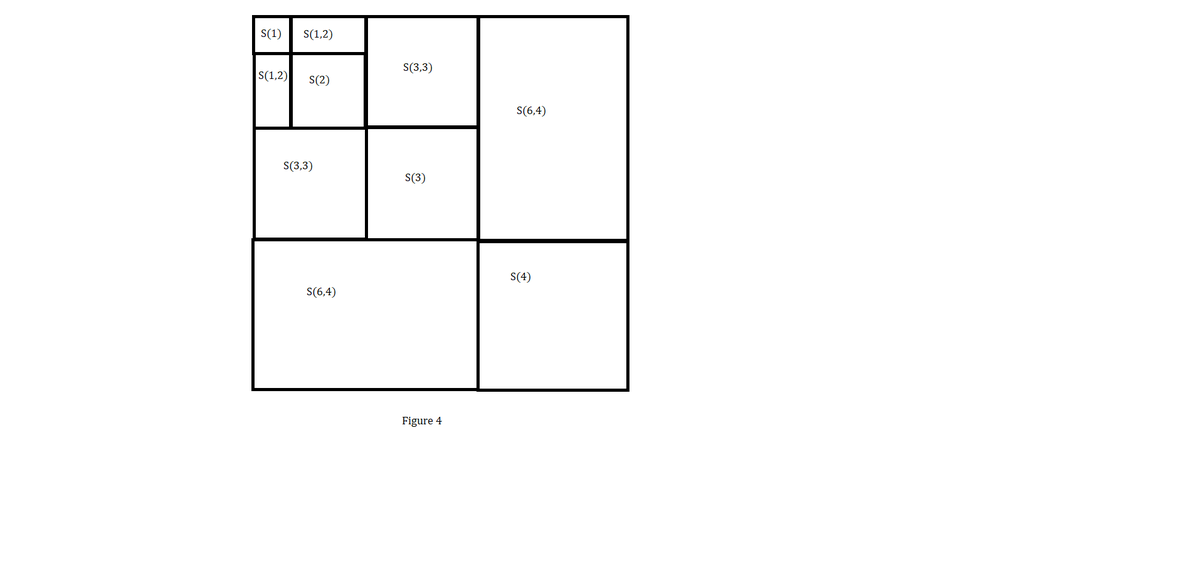New Year Problem (1)
Is the following True or False?
1 3 + 2 3 + 3 3 + ⋯ + 2 0 2 0 3 = n 2 in other words, the sum is a perfect square.
This section requires Javascript.
You are seeing this because something didn't load right. We suggest you, (a) try
refreshing the page, (b) enabling javascript if it is disabled on your browser and,
finally, (c)
loading the
non-javascript version of this page
. We're sorry about the hassle.
2 solutions
Can you explain it in any other way??
That is the only conclusion l was able to come up with. I have a similar previous problem with three numbers only, so l took more numbers and used the calculator to see if the sum works and it did. If you have a different approach, l am open mind to see if we can approach it differently.
The following identity is true for all n ∈ N 1 3 + 2 3 + 3 3 + ⋯ + n 3 = ( 1 + 2 + 3 + ⋯ + n ) 2 = ( 2 n ( n + 1 ) ) 2 This can be proved by mathematical induction but here I have a geometrical understanding to conclude this.
Here consider two terms : CUBOID ( S ) and CUBE ( C ) . CUBOID is always of thickness 1 unit and other dimensions as given in description with term S . For example, S ( a , b ) means volume of cuboid of dimensions a , b , 1 , and S ( a ) means volume of cuboid of dimensions a , a , 1 . Similarly CUBE is defined by dimension along with term C . For example, C ( a ) means volume of cube of edge length a .

Figure 1 shows 2 cubes of edge 1 and 2 (thickness is not shown) . C ( 1 ) = S ( 1 ) Cube of side length 2 can be broken into 1 cuboid S ( 2 ) and 2 cuboid S ( 1 , 2 ) C ( 2 ) = S ( 2 ) + 2 S ( 1 , 2 ) ⇒ C ( 1 ) + C ( 2 ) = S ( 1 ) + S ( 2 ) + 2 S ( 1 , 2 ) = S ( 1 + 2 ) (see figure 2) ⇒ 1 3 + 2 3 = ( 1 + 2 ) 2
Similarly, C ( n ) = n 3 = n 2 ( n − 1 ) + n 2 = 2 ( 2 ( n − 1 ) n ) n + S ( n ) = 2 S ( 2 ( n − 1 ) n , n ) + S ( n ) ⋯ Eq. 1 . Putting n = 3 we get C ( 3 ) = 2 S ( 3 , 3 ) + S ( 3 ) . From figure 3, we see that C ( 1 ) + C ( 2 ) + C ( 3 ) = S ( 1 + 2 ) + 2 S ( 3 , 3 ) + S ( 3 ) = S ( 1 + 2 + 3 ) ⇒ 1 3 + 2 3 + 3 3 = ( 1 + 2 + 3 ) 2 Similarly continuing from figure 3 by putting n = 4 in Eq. 1 and placing S ( 4 ) on the corner of figure 3 and S ( 6 , 4 ) along the sides of square as shown in figure 4 we conclude that 1 3 + 2 3 + 3 3 + 4 3 = ( 1 + 2 + 3 + 4 ) 2

This can be continued further. So whenever it is true that 1 3 + 2 3 + 3 3 + ⋯ + n 3 = ( 1 + 2 + 3 + ⋯ + n ) 2 for n = k − 1 . Then by putting n = k in Eq. 1 and placing the cuboids as described we can conclude that the equation is true for n = k . Hence it is true for all n ∈ N
Thank you for sharing a nice solution.
We can prove by induction that for any positive n , the following is true: 1 3 + 2 3 + 3 3 + ⋯ + n 3 = ( 1 + 2 + 3 + ⋯ + n ) 2 = ( 2 n ( n + 1 ) ) 2